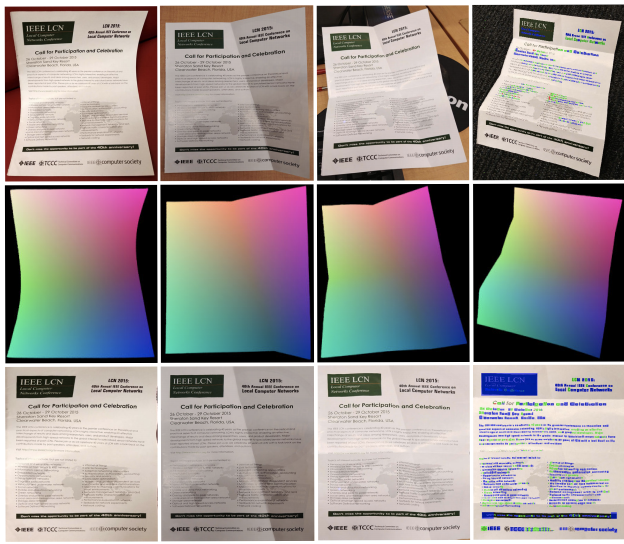Document Unwarping

Capturing document images with hand-held devices in unstructured environments is a common practice nowadays. However, “casual” photos of documents are usually unsuitable for automatic information extraction, mainly due to physical distortion of the document paper, as well as various camera positions and illumination conditions. In this work, we propose DewarpNet, a deep learning approach for document image unwarping from a single image. Our insight is that the 3D geometry of the document not only determines the warping of its texture but also causes the illumination effects. Therefore, our novelty resides on the explicit modeling of 3D shape for document paper in an end-to-end pipeline. Also, we contribute the largest and most comprehensive dataset for document image unwarping to date – Doc3D. This dataset features multiple ground-truth annotations, including 3D shape, surface normals, UV map, albedo image, etc. Training with Doc3D, we demonstrate state-of-the-art performance for DewarpNet with extensive qualitative and quantitative evaluations. Our network also significantly improves OCR performance on captured document images, decreasing character error rate by 42% on average.

Capturing document images is a common way for digitizing and recording physical documents due to the ubiquitousness of mobile cameras. To make text recognition easier, it is often desirable to digitally flatten a document image when the physical document sheet is folded or curved. In this paper, we develop the first learning-based method to achieve this goal. We propose a stacked U-Net with intermediate supervision to directly predict the forward mapping from a distorted image to its rectified version. Because large-scale real-world data with ground truth deformation is difficult to obtain, we create a synthetic dataset with approximately 100 thousand images by warping non-distorted document images. The network is trained on this dataset with various data augmentations to improve its generalization ability. We further create a comprehensive benchmark that covers various real-world conditions. We evaluate the proposed model quantitatively and qualitatively on the proposed benchmark, and compare it with previous nonlearning-based methods.
